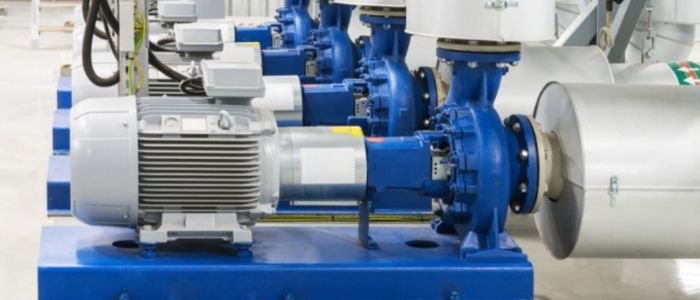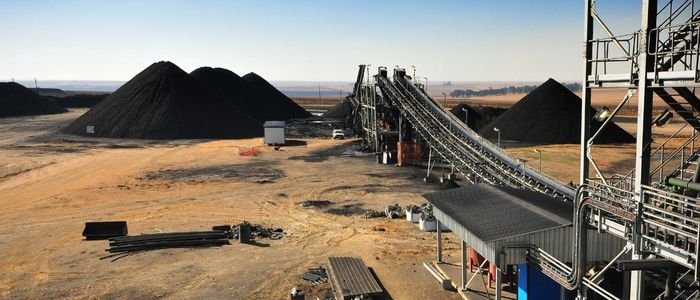Slurries are special substances that are used in many types of processing, including in clean industries like the production of biopharmaceuticals and clean industries like the processing of food, dairy, and drinks. Slurries require special attention when choosing the type and size of electric slurry pump to use with them since they mix the characteristics of both liquids and solids.
This post will talk about all the great things about an electric slurry pump. Keep reading!
What is an Electric Slurry Pump?

Slurry pumps make things move by making a mixture of liquid and solid particles more pressurized. Operating specifications include the maximum discharge flow and pressure, horsepower and brake horsepower, revolutions per minute (RPM) of the motor and pump rotating assemblies, and the temperature of the medium.
The inlet size, discharge size, reservoir or tank size, and number of pumps in the community are all configuration parameters. Slurry pumps are also distinguished by their features, power source, and product application.
The Kingda slurry pumps employ air-cooled, drip-proof, or oil-cooled motors. Adjustable models can run at speeds the operator sets and may include a backup power supply. Belt-driven, close-coupled, or continuous-duty slurry pumps are available.
Others have a control panel, end or bottom suction, and a grinding mechanism for shredding garbage, sewage, rubber goods, plastic bags, or fabrics into small pieces. Slurry pumps that are corrosion-resistant, frame-mounted, hygienic, jacketed, and multi-staged are also available.
Features of an Electric Slurry Pump
Slurry pumps have features such as leveling (on/off control devices), self-priming, and thermal overload protection. There are also non-clog, plug-in, reversible, and run-dry models available. Self-priming slurry pumps make enough of a vacuum on their own to pull fluid into the inlet without the user having to do anything.
Slurry pumps that do not clog are designed to pump sticky or stingy materials that would block other types of industrial pumps. Top suction devices can draw fluid from the top of a tank instead of the bottom of a reservoir. The slurry is pumped through the pump vertically by rotor and stator assemblies that stand straight.

Energy Source of the Electric Slurry Pump
When choosing slurry pumps, the power source is an important specification to consider. Alternating current (AC), direct current (DC), hydraulics, and air-driven or pneumatic systems are all options.
Slurry pumps run on steam, natural gas, water, or a gasoline or diesel engine. Manual slurry pumps are powered by hand or foot.
Slurries can be pumped using a variety of pumps, as described below. However, we must address a few critical issues before deciding which technology to use.
The size and nature of the solids in the liquid: the size and nature of the solids in the liquid will affect the amount of physical wear on the pump and its components, as well as whether the solids will pass through the pump without being damaged.
The speed and shear inside the centrifugal pump may damage the slurry or solids. Twin screw pumps, in general, cause the least amount of damage to solids in a slurry.
Slurries that are more corrosive will wear down pump parts faster and may affect the choice of pump.

Various Applications for Electric Slurry Pump
Choosing the right pump for your slurry application can be difficult because many factors must be considered, including flow, pressure, viscosity, abrasiveness, particle size, and particle type. An applications engineer who knows how to take these things into account can help a lot when it comes to choosing the right pump.
The Different Types of Electric Slurry Pump
Plastic pumps are made of acid, chemicals, or other aggressive media. Metal alloys like Hastelloy can also be used in some cases, particularly when high temperatures are required. Pumps with parts that come in contact with the fluid and are made of materials that are resistant will also move these fluids reliably and without extra maintenance.
Users in the food industry rely on stainless steel pumps for various primary processes because, unlike cast iron pumps, they meet the industry’s stringent hygiene standards. It also applies to the pump housing in food and pharmaceutical applications: it must be easy to clean to ensure no contamination. Stainless steel enclosures
For driving pumps, the electric motor has become the gold standard. It has several advantages: it runs quietly and cleanly, and electricity is usually readily available in industrial settings. When a pump has a frequency converter, its speed can easily change depending on what it needs to do. This saves energy and reduces wear on the installation.
What other drives besides the electric motor are available for pumps?
- The diesel engine
- The hydraulic motor
- Air compression
- Magnetic attraction
- Solar power

Kingda Slurry Pump and their Features
- Horizontal slurry pump. The shaft of a horizontal slurry pump is parallel to the horizontal plane, hence the name. It is a single-stage, single-suction, axial suction, cantilever horizontal centrifugal pump with overflow parts made of high-strength and wear-resistant materials. The horizontal slurry pump is ideal for conveying abrasive, high-concentration, corrosive, and fine-particle slurry. It is often used to move abrasive slurries in the metallurgy, mining, coal, and power industries, among others.
- Vertical slurry pump. Vertical slurry pumps, as opposed to horizontal slurry pumps, are commonly used in slurry pools. The pump head should be submerged beneath the liquid, which is why it is known as a submerged slurry pump. Not all vertical slurry pumps, however, are submerged underwater. The motor and non-pump head compartments determine it. It is frequently used to transport corrosive, coarse particles, and high-concentration slurry.
- Submerged Slurry Pump. The Submerged Slurry Pump is a cantilever centrifugal pump with a semi-open impeller that is vertical and single-stage. A mixing blade is installed at the impeller’s suction edge extension. Its main selling point is the length of its pump shaft in the submerged part, which ranges from 800 to 2000 millimeters. It is mostly used in municipal engineering, paper mills, cement plants, printing and dying plants, and other industries.
- Submersible Slurry Pump. The submersible slurry pump is the last on the list. The pump and the motor are coaxially integrated. Its main selling point is that no complex fixtures or protective measures are required on the ground. It can be quickly submerged in the slurry and left to work. A mechanical seal protects the motor by keeping high-pressure water and impurities out of the cavity. The submersible pump works best for moving abrasive slurries like sand, cinder, and tailings.
The Benefits of Electric Slurry Pumps

Slurry pumps are commonly used in the mining, power, and chemical industries. They have excellent abrasion resistance and long service life.
Some of the benefits of slurry pumps are listed below.
- Low power consumption
- Slurry pumps that are light in weight and consume little power can save a lot of energy.
- Excellent packing system
- Slurry pump packing performance was improved by using a packing seal. It has the elasticity of rubber, ensuring a reliable sealing effect with no leakage.
- Make management easier.
Slurry pumps don’t move much water, and they are easy to manage and keep up with after work.
- Abrasion resistance is high.
The slurry pumps will be impacted by particles and gravel while working, and with high wear resistance, they not only have a long working life but also improve production and efficiency.
Slurry pumps, as a practical and popular auxiliary tool, have three primary issues during use: cavitation, flow instability and seal failure, all of which contribute to pump leakage. If you have slurry pumps, you should know how to deal with such problems.
Drawbacks of Electric Slurry Pump

- The material passing through is too large. Pump clogs are a common problem in the pumping industry, especially with centrifugal pumps, which have a very narrow critical tolerance between the pump casing wall and the impeller, allowing only tiny particles to pass safely. If these pumps come into contact with larger particles than they were designed for, they may clog, resulting in lost productivity and additional maintenance work to clear the blockages.
- The pump needs to be operating at its peak efficiency (BEP). The BEP represents the most efficient operation of the pump. A pump should operate near its BEP. The flow is not adequately pushed out of the discharge when the slurry pump is working below the BEP.
Because the flow out of the release is lower than what was planned, a lot of abrasive slurries is forced to go back into the casing. This causes damage, air pockets in the pump that can cause cavitation, and wear on important pump parts.
- There is insufficient net positive suction head available (NPSHA).NPSHA is the absolute pressure applied to a liquid entering the pump. The pump will most likely develop cavitation if there is insufficient NPSHA.
Cavitation corrodes and damages pump components such as the impeller, seals, and pump casing. If the problem isn’t fixed, the pump’s performance, wear, and the cost of repairs and replacements will all go down.
Always remember! Slurry pump operation should be standardized to reduce operational difficulties, and frequent inspections should be carried out to determine the cause and make prompt decisions when abnormal situations arise. Adjustments are the only way to ensure proper concentrator performance and equipment utilization.
If you want to avail products on eclectic slurry pumps visit Kingda now.


